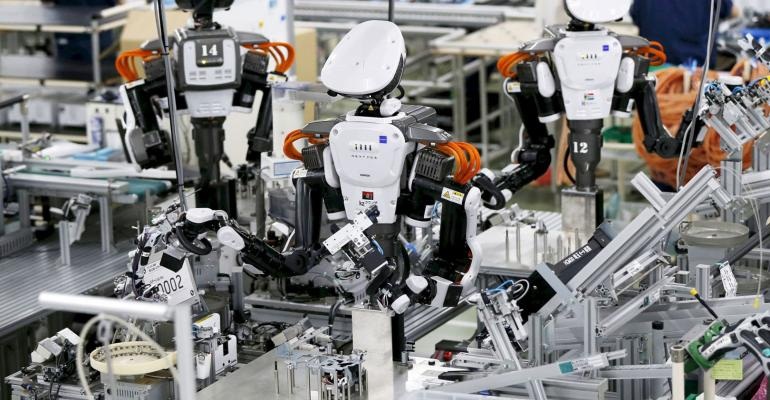With so much excitement about progress in artificial intelligence, one may wonder why intelligent machines aren’t already running our lives. Key advances have the capacity to dazzle the public, policymakers and investors into believing that human-level machine intelligence may be just around the corner.
But a new report, which tries to gauge actual progress being made, attests that this is far from true. The findings may help inform the discussion over how AI will affect the economy and jobs in the coming years, MIT Technology Review reported.
“There’s no question there have been a number of breakthroughs in recent years,” says Erik Brynjolfsson, a professor at the MIT Sloan School of Management and one of the authors of the report. “But it’s also clear we are a long way from artificial general intelligence.”
Brynjolfsson points to remarkable advances in image classification and voice recognition. But computers trained to perform these tasks cannot do much else, and they cannot adapt if the nature of the task changes slightly or if they see something completely unfamiliar.
The report is part of an ongoing effort, called the AI Index, to quantify progress in artificial intelligence and identify areas where more is still needed.
Brynjolfsson says the new report should help with these sorts of economic investigations. “The next thing to ask is how this (progress) will affect the economy and jobs,” he says.
The report uses several metrics to measure the current AI boom, including growth in job postings related to AI, the rise of AI-focused startups, and the number of contributors to major open-source AI projects. It also points to existing benchmarks in specific areas such as image processing, natural-language understanding, and computerized play of chess, Go, Atari games, and more.
How Soon?
There are basically three big questions about artificial intelligence and its impact on the economy: What can it do? Where is it headed? And how fast will it spread?
Three new reports combine to suggest these answers: It can probably do less right now than what one thinks. But it will eventually do more than one probably thinks, in more places than one probably thinks, and will probably evolve faster than powerful technologies have in the past.
This bundle of research is itself a sign of the AI boom. Researchers across disciplines are scrambling to understand the likely trajectory, reach and influence of the technology—already finding its way into things like self-driving cars and image recognition online—in all its dimensions. Doing so raises a host of challenges of definition and measurement, because the field is moving quickly—and because companies are branding things AI for marketing purposes.
An “AI Index,” created by researchers at Stanford University, Massachusetts Institute of Technology and other organizations, released Thursday, tracks developments in artificial intelligence by measuring aspects like technical progress, investment, research citations and university enrollments. The goal of the project is to collect, curate and continually update data to better inform scientists, businesspeople, policymakers and the public.
The McKinsey Global Institute published a report Wednesday about automation and jobs, sketching out different paths the technology might take and its effect on workers, by job category in several countries. One finding: Up to one-third of the US workforce will have to switch to new occupations by 2030, in about a dozen years.
And in an article published in November by the National Bureau of Economic Research, economists from MIT and the University of Chicago suggest an answer to the puzzle of why all the research and investment in AI technology have had little effect on productivity.
Each of the three research initiatives has a somewhat different focus. But two common themes emerge from the reports and interviews with their authors.
- Technology itself is only one ingredient in determining the trajectory of AI and its influence. Economics, government policy and social attitudes will play major roles as well.
- Historical patterns of adoption of major technologies, from electricity to computers, are likely to hold true for AI. But if the pattern is similar, the pace may not be. And if it is much faster, as many researchers predict, the social consequences could be far more wrenching than in past transitions.


